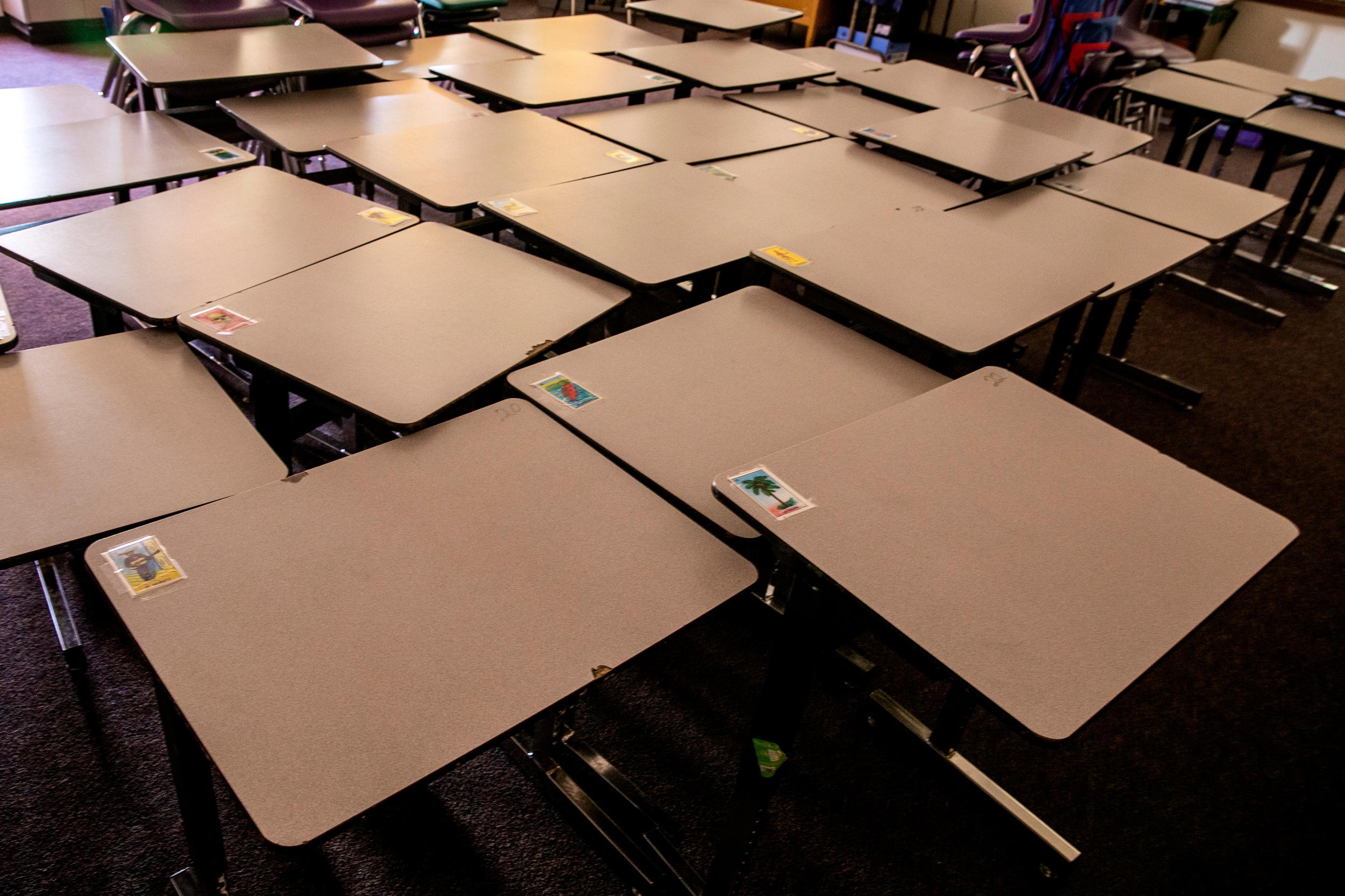
Updated at 1:21 p.m. on Aug. 20, 2024
Colorado students are still digging out from pandemic learning losses but in some cases have caught up, according to standardized test scores known as the Colorado Measures of Academic Success or CMAS. The test results, however, still show large and persistent gaps between different groups of students.
In reading and writing, 44 percent of children were meeting or exceeding expectations. That compared to 43 percent last year and 46 percent prior to the pandemic. In math, 34 percent of children met or exceeded expectations compared to 33 percent last year and about 35 percent prior to the pandemic.
It’s the third year since the pandemic that Colorado students took a normal set of standardized tests. Third- through eighth-graders took the tests in English and math, while fifth, eight- and 11th-graders took the science tests. Tests were canceled in 2020 and modified in 2021.
Schools used millions of federal dollars to pay for high-impact tutoring, after-school programming and high-quality math curriculum over the last several years. That money is largely gone for this school year.
“We are encouraged by the continued improvement of our students since the pandemic disrupted learning,” said Colorado Education Commissioner Susana Córdova. “We continue, however, to see troubling and persistent achievement gaps across student groups. It is not enough to see growth for some Colorado students, we need to ensure that every child is getting the support they need to be successful.”
Córdova said the lingering impacts of the pandemic are still showing up in attendance patterns and teacher turnover. A big goal this year will be focused on getting students to attend school on a regular basis.
Here are some highlights.
Math continues to rebound more quickly than reading
Every grade except eighth had more students meeting or exceeding expectations compared to 2023. Third through sixth graders performed better or equaled the performance of those grades before the pandemic.
Students in third, sixth, seventh and eighth grades had a slightly higher percentage of students meeting or exceeding expectations in English (reading and writing) compared to 2023. Students in third and sixth grades performed better than in 2019.
The other grades still lag behind pre-pandemic levels. Fourth graders struggled with reading and writing. They declined 1.8 points from 2023, keeping them down six points from 2019.
Pervasive achievement gaps between races and income levels remain
Gaps based on racial and ethnic groups, disability, family income levels and English-speaking ability remain large, as they have for the past several decades. They show little to no change compared to 2023. The gaps range from 20 and 35 points between most races and ethnicities to as high as 46 points for students learning English on fifth-grade reading and writing tests.
Other examples: About 55 percent of white fourth-graders are on target in reading and writing while just 22 percent of Black and Hispanic students are.
In sixth-grade math, 50 percent of Asian students are meeting or exceeding expectations, while just 40 percent of white students are and 13 percent of Hispanic students.
Students with disabilities and English language learners are more than 33 points below other students.
Córdova said officials will examine data from schools that were outliers to learn from their best practices. The state also has learning cohorts of different districts focused on some of the groups of students, such as migrant students and how to tackle chronic absenteeism. Colorado has one of the highest rates of students who miss a lot of school.
“We definitely see in our attendance data that many of the disaggregated groups that we're talking about having lower levels of achievement also have lower levels of attendance,” she said.
The gaps between boys and girls remained largely the same with minor changes up or down. Girls historically score higher in reading and writing in every grade while boys score higher in math in every grade. Third-grade boys saw 2.6 points improvement in reading and writing, and both seventh-grade boys and girls saw more than 3 points improvement in math.
Science is a bright spot for improvement
Science tests are administered in three grades. More students in fifth, eighth and 11th grades met or exceeded expectations in CMAS science compared to 2023. Fifth graders knocked it out of the park, jumping by 4 points over last year.
Still, just a third of students are meeting or exceeding expectations in science, which drops to a quarter by 11th grade.
However, only about half of high school science students took the test, which makes results more unreliable.
The performance among some groups in science, particularly students with disabilities and multilingual learners are extremely low compared to other students.
"These differences are troubling," said Joyce Zurkowski, chief assessment officer.
Math drops as students take the test online for the first time
In the college entrance exams PSAT and SAT, ninth and 10th graders either surpassed or nearly equaled pre-pandemic level scores. About 58 percent of 11th graders are where they should be for college readiness. About two-thirds of ninth and 10th graders are meeting college benchmarks.
Math tells a different story. High school students are still well below where they were before the pandemic – between 5 and 10 points behind. Compared to last year, ninth graders dropped 7 points and 10th and 11th graders declined 4 points.
Only about a third of high school students in grades 10 and 11 are meeting college entrance expectations in math.
A big change this year was that students took the tests online. There were shifts in the amount of algebra versus geometry tested, and the amount of number questions versus word problems.
“All of those I would suggest are indeed having an impact on our scores as well as true changes in student performance,” said Zurkowski. “At this point, we can't disentangle those two factors as we move forward.”
She said next year’s results will reveal true changes in student performance.
How much students grow academically in one year
Another way the state measures students is their academic “growth.” That’s different from a one-time test score. Growth shows how much progress individual students have made over a year compared to their "academic peers."
The good news is that the amount of academic progress students made in one year compared to their academic peers has largely returned to pre-pandemic levels.
That is especially the case for elementary and middle school math.
“Because growth is higher than the 2019 levels, it suggests that students are on a more accelerated path to returning to pre-pandemic achievement (single test score) levels … so very encouraging,” said Lisa Medler, executive director of accountability and continuous improvement.
School and district-level data will be released Aug. 29. After that school districts will send families their individual report cards.









